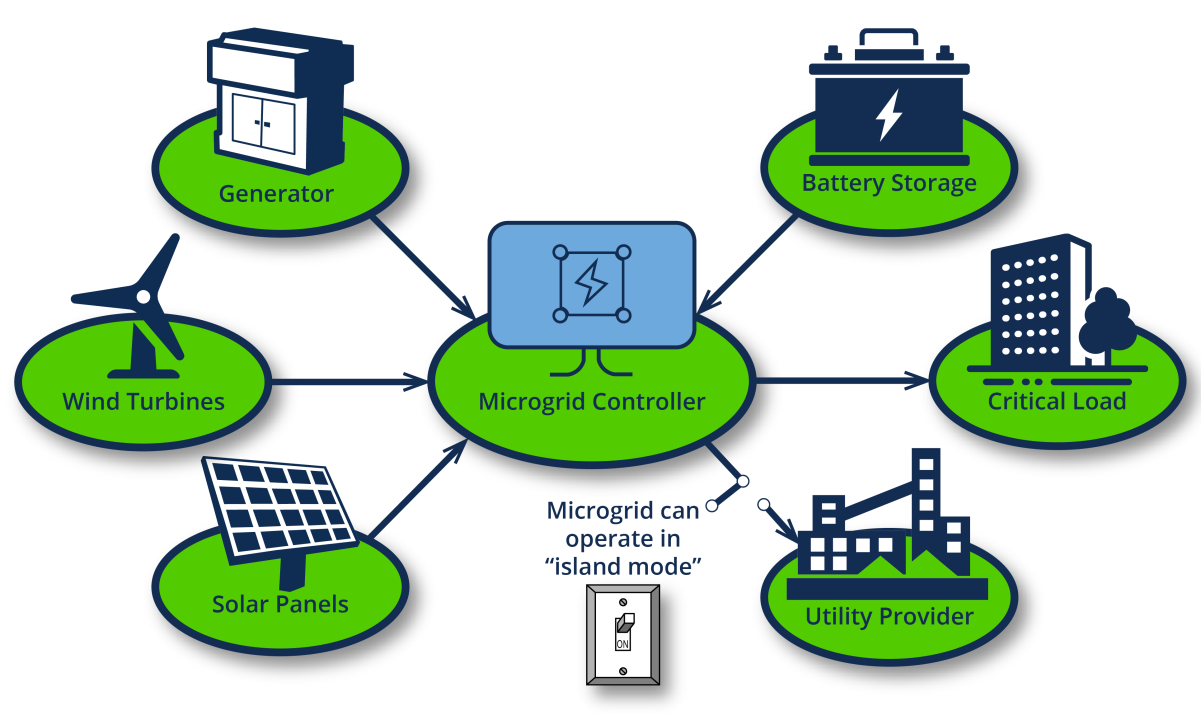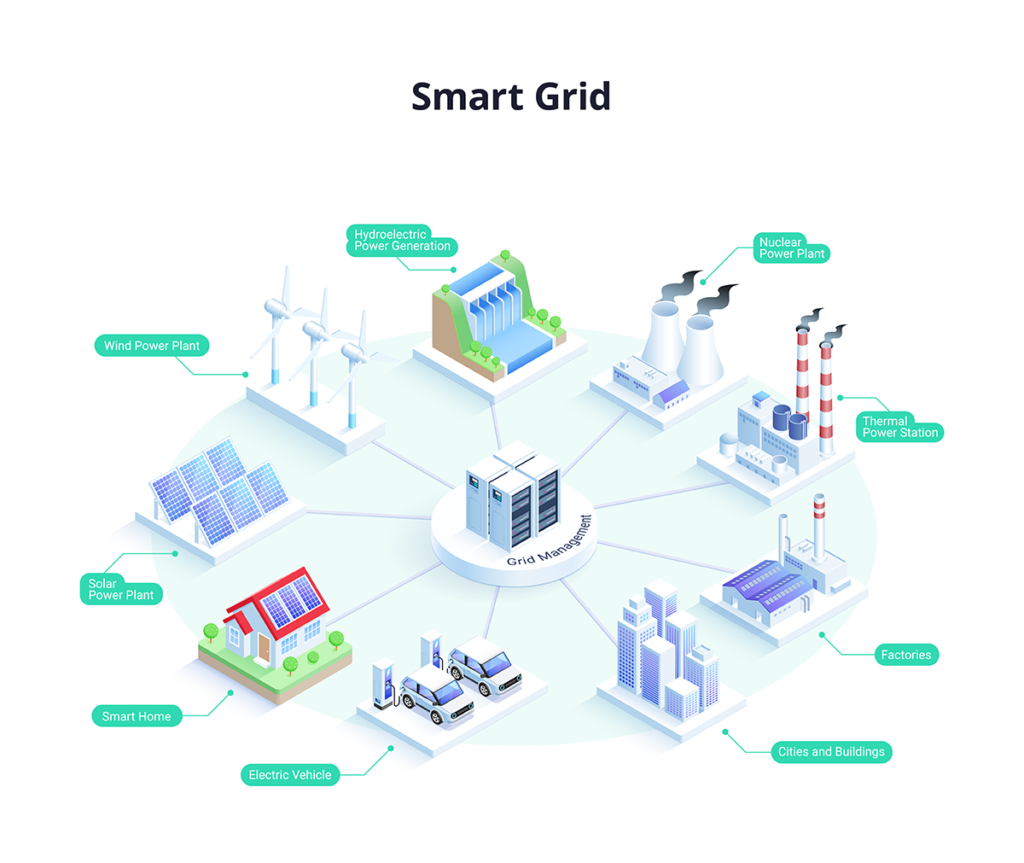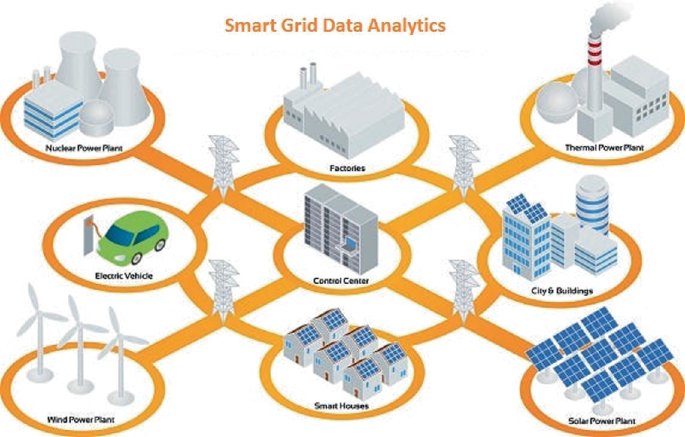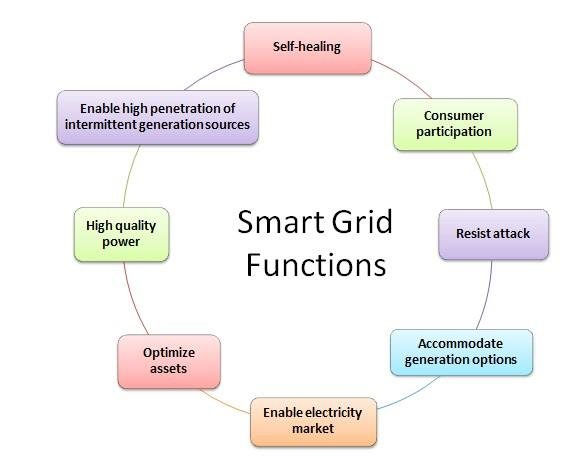Definition: Smart Grid
The smart grid uses modern control, communication, and information technologies to enable wide, high-speed, and bidirectional communication among electronic devices and sensors distributed across a power system. It enables dynamic, efficient, fast, and accurate scheduling, operation, control, and management of the power system.
The smart grid is an upgraded form of the traditional grid and combines modern technologies and operational concepts. Key characteristics include:
- Sustainability: Makes extensive use of renewable energy and energy-efficient technologies to enable a high share of green energy integration and operation.
- Reliability: Uses information technology and intelligent devices to improve transmission and distribution intelligence, enhancing power quality and supply reliability.
- Safety: Employs information technologies for real-time monitoring, warning, and management of power equipment and systems, enabling timely identification and isolation of faults to protect users and operators.
- Interactivity: Uses data interconnection and visualization to enable instant communication among grid devices and between supply and demand, supporting efficient coordination and flexible operation.
The smart grid supports cleaner energy integration, improved grid operation, and energy supply security.
Definition: Intelligent Power System
An intelligent power system integrates automation, computing, communication, and control technologies based on modern information and communication technologies to modernize power system operation. It introduces and integrates emerging technologies on top of existing systems to achieve high automation and improve reliability, flexibility, stability, and safety.
The intelligent power system primarily includes four technology areas:
- Smart grid technologies: Including centralized and distributed energy systems, energy internet concepts, and autonomous intelligent substations, which enable efficient renewable utilization and flexible matching with energy-intensive loads.
- Intelligent equipment: Including smart sensors, high-voltage switching devices, line safety sensing devices, and intelligent insulators for online monitoring and fault diagnosis of power equipment.
- Intelligent control: Including adaptive real-time control, distributed control and management, remote control and monitoring, and intelligent optimal scheduling to coordinate complex systems.
- Intelligent information technologies: Including cloud computing, Internet of Things, big data, and artificial intelligence for data integration, analysis, and decision support.
Overall, the intelligent power system uses information technology to monitor, control, coordinate, and manage all parts of the power system, enabling optimized scheduling and efficient operation to improve reliability, economy, and environmental performance.
How a Smart Grid Works
The smart grid is a highly automated, integrated power system that applies information technologies, intelligent control, and advanced communications to make supply, demand, scheduling, safety, and quality more intelligent, efficient, and reliable.
Main operational principles include:
- Renewable integration: Uses distributed power sources, hybrid wind-solar approaches, and energy storage to incorporate renewables and improve environmental performance and utilization efficiency.
- Monitoring and control: Deploys devices with sensors and communication functions to continuously monitor and control various operational states of the power system.
- Data storage and analysis: Collects and stores monitoring data in data centers for analysis and optimization.
- Intelligent scheduling and control: Uses artificial intelligence and fuzzy control to develop dispatch schemes, analyzing loads and generation to optimize system performance and reliability.
- Intelligent interconnection: Applies advanced communications to interconnect plants, distribution companies, and other units for efficient information transfer and interaction.
How an Intelligent Power System Works
An intelligent power system is a modern power system that integrates automation, intelligence, and centralized management using advanced information, computing, communication, and control technologies.
Main operational principles include:
- Real-time monitoring: Deploys sensors across the grid to monitor key parameters such as voltage, energy, and power in real time.
- Data transmission: Transmits collected data remotely via advanced communication networks such as wide-area networks, local area networks, and wireless communications.
- Data analysis: Uses big data analytics to process and analyze real-time data to produce intelligent insights.
- Security detection: Performs real-time security checks to detect and prevent potential risks and hazards in the power system.
- Control and dispatch: Uses computing and control technologies to execute real-time control and dispatching, allowing rapid response to required adjustments.
- Intelligent maintenance: Applies prediction and diagnostics to automatically detect and handle faults during operation, achieving intelligent maintenance.
Key Differences
Both the smart grid and the intelligent power system develop from information and intelligent control technologies and share similarities, but they differ in concept and scope.
The smart grid emphasizes internet-of-things technologies, intelligent devices, and sensors to achieve dynamic, efficient scheduling, operation, control, and management of the grid, focusing on interconnectivity and coordination.
The intelligent power system covers comprehensive construction and optimization of the entire power infrastructure, integrating intelligent and information technologies across generation, distribution, and dispatch control to form a complete power management system. In this sense, the intelligent power system represents a broader concept that can encompass smart-grid elements.
 ALLPCB
ALLPCB








